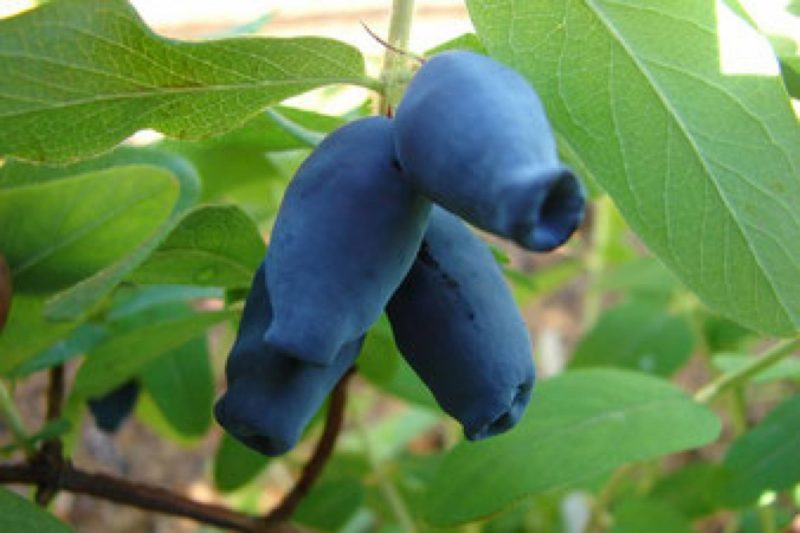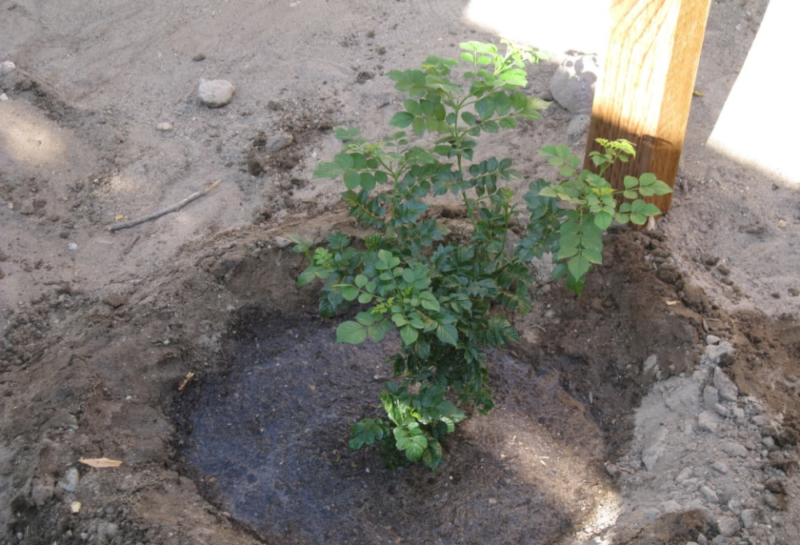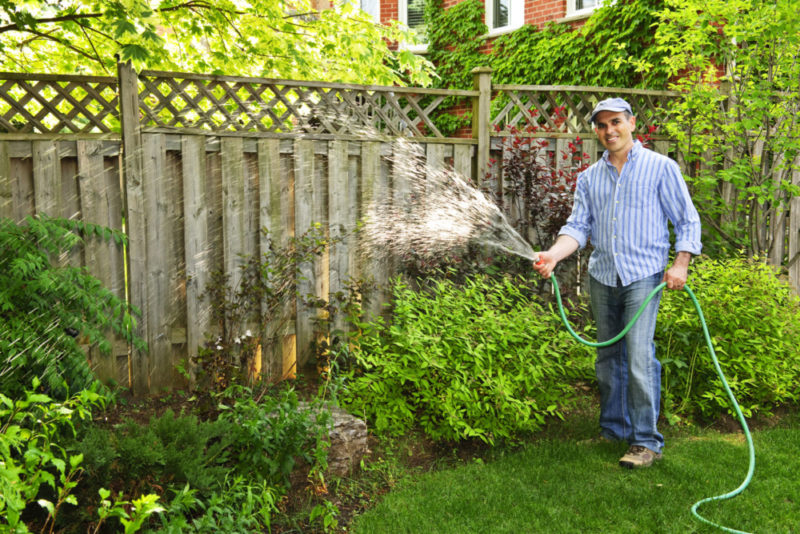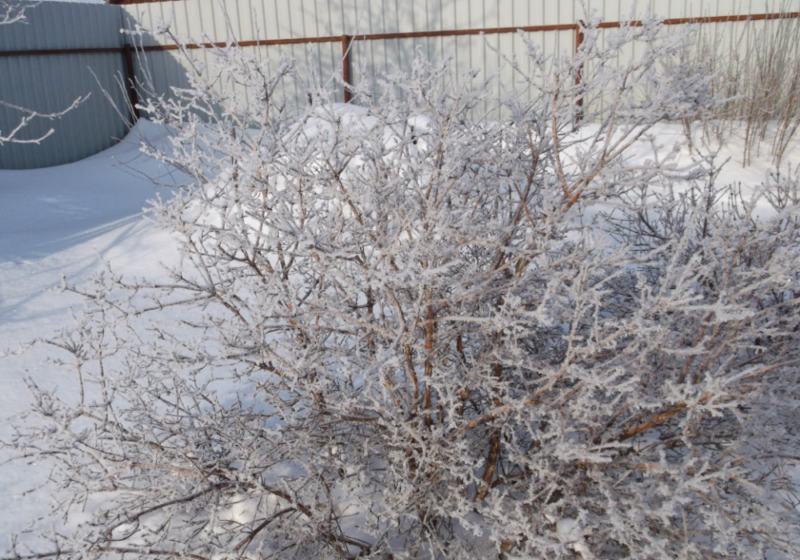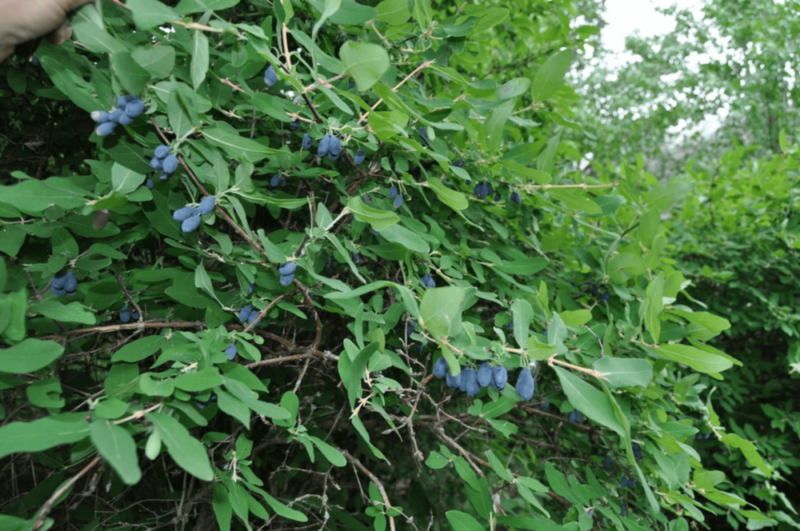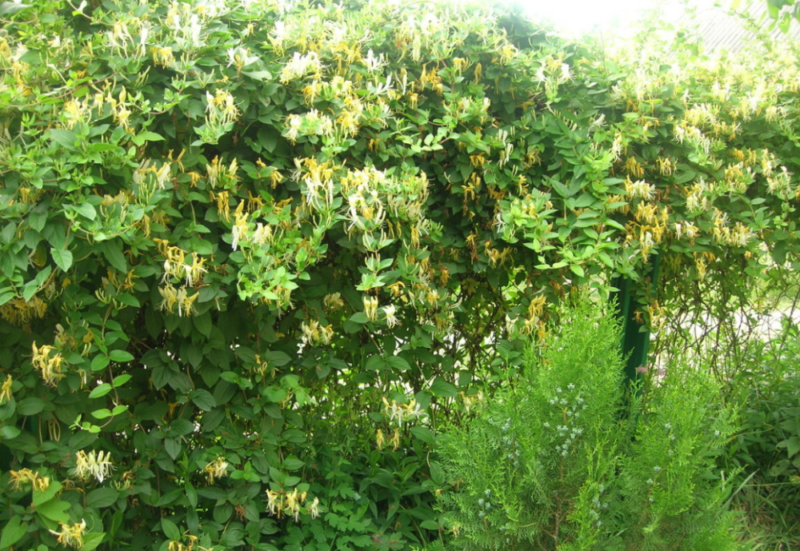Honeysuckle "Amphora" is the northern berry, which was rarely grown 15 years ago on household plots. Today, this medicinal plant can often be found in gardens.
Material Content:
Description of a variety of honeysuckle "Amphora"
From a brief description of the variety it follows that the bushes of such a plant sometimes reach one and a half meters, differ in a rounded and very dense crown. Branches of culture are skeletal with a brown tint. Leaves are dense and fleecy.
The main value of the bushes is the berries, which reach a length of more than 2 cm, have an interesting jug shape. The fruit tastes sweet and sour. From the bush, the variety gives up to 2 kg of the crop. Fruiting "Amphora" begins in the second year. Ripening occurs in the middle of summer.
It is important to plant a variety next to some other types of honeysuckle, otherwise it will not be pollinated.
“Amphora” of the honeysuckle family is one of the best varieties suitable for cultivation in the northern regions with the goal of harvesting for the winter. They make jelly, compotes and jams from it. Berries are also used for medicinal purposes.
Outdoor landing
The plant is interesting for its ability to grow in one place for about 20 years, without the need for transplants. However, if desired, the shrub can be moved to another part of the territory without any loss for it - such a procedure honeysuckle tolerates very well.
Honeysuckle planting in open, sunny areas is preferred. This berry is very fond of the sun's rays throughout the day. In the shaded corner, the yield will be much lower. Amphora is not afraid of drafts and wind, but does not tolerate stagnation of water. These two factors must be paid attention to when choosing a site for planting a plant.
If you take into account the preferences for the composition of the soil, then the honeysuckle in this regard is completely unpretentious. The only thing that needs to be done is to add organics in the production of such work.
The best time for planting a bush is the end of summer and autumn. Already in March, buds begin to swell on the shrub, and after autumn events the plant will quickly grow in the spring. Spring planting is stress for honeysuckle, because of which it can even die.
They dig a hole for the bush, focusing on the root system of the seedling. Drainage is arranged at the bottom of the pit, then the required compost is poured, which requires about 1 bucket. Be sure to add ash (1 liter). It is useful to add 50 g of superphosphate to the planting fossa.
The seedling is set in the middle of the hole, covered with soil, necessarily spilled and slightly rammed. A very important point when planting - it is impossible to shorten it in any case, as this can delay fruiting.
Deciduous Shrub Care
This deciduous shrub does not require painstaking care, but it is still necessary to follow some rules in order to get fruits.
Honeysuckle does not like dampness, therefore it is necessary to water the bush during the ripening of berries and after harvesting. It is also unacceptable to miss winter watering just before the frost. The rest of the time, humidification is carried out only when the soil dries in dry weather. If it rains in the summer, then the bush will have enough natural rainfall.
Amphora is also not very demanding on top dressing. A good increase in yield will be if urea is added in the spring. To do this, about 25 g of fertilizer is applied to the melting snow right under the bush. If the soil is poor, then also in the spring, in a circumcision, a bucket of humus is closed up.
In autumn, around September, ½ liter of ash and 2 tbsp. l superphosphate composition.
It is important not to fertilize the honeysuckle in the first two years, since this culture is enough of the nutrition that was provided during planting. Do not overfeed it, otherwise the bushes will build up green mass to the detriment of berries.
Honeysuckle care is mandatory weeding. It is most convenient to carry them out the day after watering.
Pollination and pruning technology
Honeysuckle is a self-infertile culture, therefore it definitely needs pollinators. To set more berries, certain plants should be planted next to the bushes.
The best for honeysuckle "Amphora" will be pollinators of varieties of the same culture:
- Bazhovskaya
- "Violet";
- "Gzhelka";
- "Viola".
These species are planted two meters from shrubs. It is advisable to have them in a group.
To increase productivity and make the bushes beautiful, one should master the technology of trimming them. The first time this procedure is carried out after the shrubs reach the age of three. In the initial seasons, only sanitary haircuts and pruning of branches growing inside the crown are needed.
When the honeysuckle reaches the age of six, they begin to rejuvenate the bushes annually, pruning them. The purpose of such haircuts is thinning of a thickened crown. Events can be held in spring or autumn. There are no leaves at this time and branches are clearly visible.
Preparing the plant for winter
When preparing honeysuckle for winter, it is important not to miss the pre-winter hydration, which will help the plant gain strength before the upcoming cold. To do this, shrubs abundantly shed before the first frost.
It is no longer possible to irrigate plants after the onset of cold weather.
Edible honeysuckle "Amphora" is suitable for cultivation even in regions with severe winters, as it is very resistant to frost. Only young seedlings are sheltered in front of them in order to protect the shoots that have not yet matured. It is best to use agrofibre to warm the plants. If there is a snowy winter, shrubs are additionally sprinkled with snow.
Protection against diseases and pests
When the dry and sunny summer season happens, the honeysuckle will practically not hurt, and insect pests will not in this case launch an attack on it. With frequent rains, shrubs can suffer from powdery mildew. Young twigs in such wet weather can be attacked by thyroid or aphid.
When a fungus appears on plants, they must be sprayed with Topaz or Skor. Against parasitic insects, the compounds Fitoverm and Spark are used.
To increase the resistance of shrubs to diseases, in the spring they are sprayed with Epin or Zircon. And also for preventive purposes, honeysuckle is treated with a 5% urea solution in early spring.
Gardener tips
To obtain as many berries as possible, pollination of the variety is necessary. This will help not only pollinating varieties, but also insects. The best among them are bumblebees, which are more likely to fly to large landings. Therefore, it is better to plant shrubs not in a row, but in groups - curtains. No less effective will be spraying the bushes with a sugar solution. This requires 2 tbsp. l sweet crystals need to be dissolved in a bucket of water and spray shrubs abundantly at the beginning of flowering.
Annual thinning of the bush helps to increase productivity. The honeysuckle has a very dense crown, because insects cannot get inside it to pollinate all the flowers. From the fourth year of the bush's life, thinning clippings must be done.
Honeysuckle berries are very fond of birds. In order not to be left without a crop, it is necessary to protect the bushes with a net or put a scarecrow.
A real find for the northern garden is the Amphora honeysuckle variety that tolerates frost and is very unpretentious. The culture begins to bear fruit early, and even a beginner gardener can cope with the cultivation process without much experience. In addition, honeysuckle bushes look very decorative and will become a real decoration of the garden.


